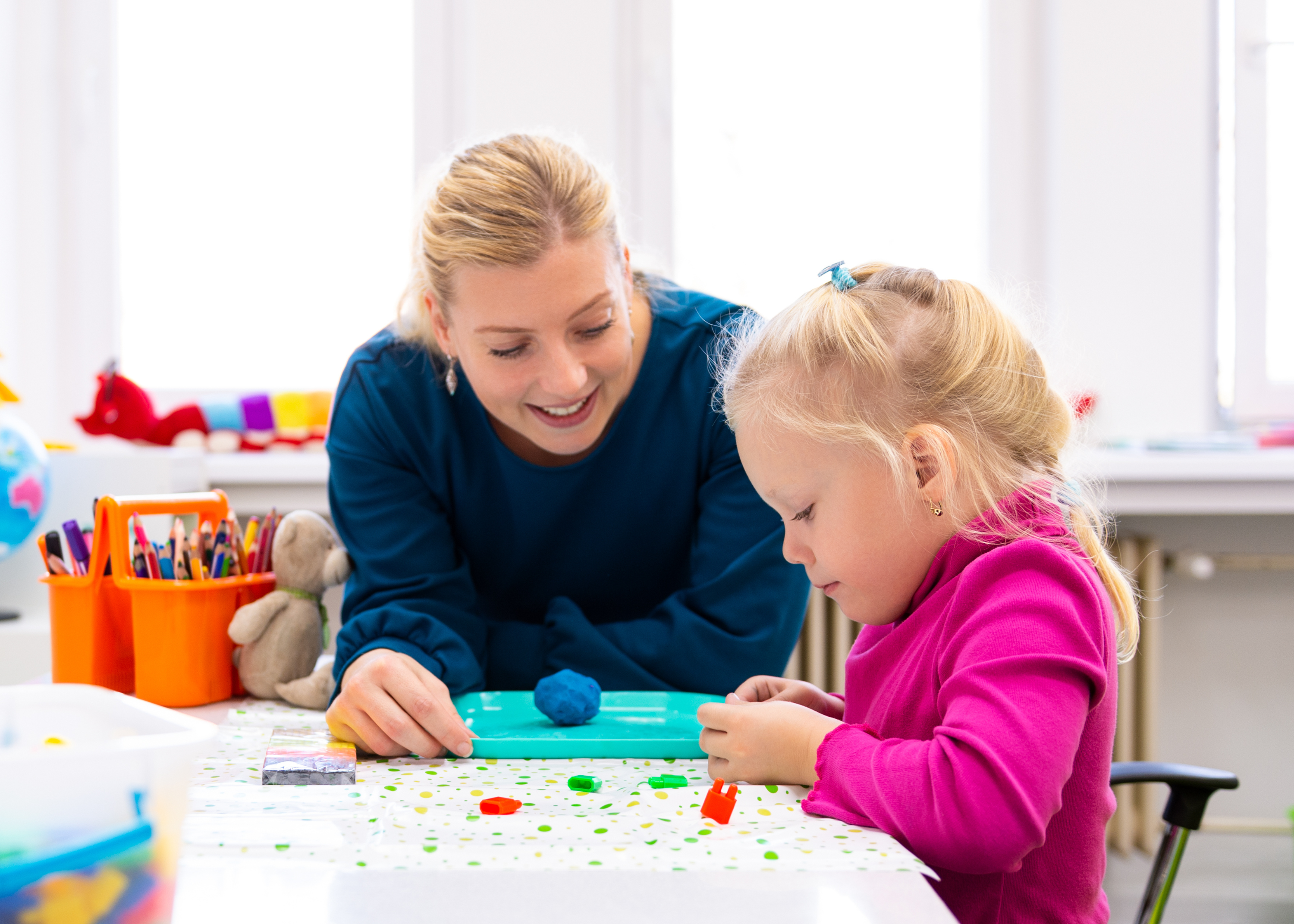Why Joint Attention Is Crucial in Pediatric Therapy
What Is Joint Attention?
Joint attention is the shared focus of two or more individuals on an object or event. It has always been a strong focus in pediatric therapy, especially for children with developmental delays, autism, and other communication challenges. Here’s why joint attention matters:
Foundation for Language Development
Sharing Focus
Joint attention involves two people sharing their attention on the same object or event. This shared focus creates a crucial context for language learning. When a child sees an object and their caregiver labels it, they start to associate words with the object.
Turn-Taking
Joint attention lays the groundwork for turn-taking in communication. Children learn to follow the caregiver’s gaze, then direct their own attention to the object, and back to the caregiver. This back-and-forth interaction is essential for conversation skills.
Joint Attention and Social-Emotional Development
Understanding Others’ Perspectives
Joint attention helps children understand that other people have their own thoughts, feelings, and intentions. They learn to share their interests and recognize the interests of others.
Building Relationships
Shared experiences and interactions fostered through joint attention strengthen social bonds between the child and caregivers, siblings, and peers.
Cognitive Development Benefits
Cognitive Flexibility
Joint attention requires children to shift their attention between different people and objects. This flexibility is important for problem-solving and learning.
Developing Theory of Mind
Joint attention is closely linked to the development of “theory of mind”—the ability to understand that others have different beliefs, desires, and intentions.
How Our Therapists at Kids Place Support Joint Attention
At Kids Place, our neurodivergent-affirming pediatric therapists use a variety of techniques to support the development of joint attention skills:
-
Following the child’s lead: Using the child’s interests as a starting point for interaction.
-
Naturalistic approaches: Integrating joint attention activities into daily routines and play.
-
Sensory-friendly environments: Creating calm, comfortable spaces to minimize sensory overload.
-
Offering choices and flexibility: Allowing the child control over pace and activities.
-
Celebrating all communication: Valuing gestures, vocalizations, and AAC methods.
-
Using gestures and vocalizations: Pointing, showing, and sounds to direct attention.
-
Shared-focus games: Activities like peek-a-boo, blowing bubbles, and using toys with movement.
-
Modeling joint attention: Demonstrating how to share attention by pointing and commenting.
What Neurodivergent-Affirming Therapy Does Not Include
At Kids Place, we prioritize the individual’s needs and perspectives. That means our therapists avoid:
-
Forcing eye contact: It can be distressing, especially for children on the autism spectrum.
-
Aversive techniques: No punishment, coercion, or pressure.
-
Intrusive approaches: Constant direction or interruption can be counterproductive.
-
Fixating on deficits: We emphasize strengths and celebrate neurodiversity.
-
Ignoring the child’s interests: We ensure therapy is always child-led and engaging.
Signs Your Child May Benefit from Joint Attention Therapy
Consider reaching out for a pediatric therapy evaluation if your child shows little or no interest in:
-
Following your gaze or pointing.
-
Bringing objects to share with you.
-
Engaging in back-and-forth interactions.
-
Initiating shared attention (pointing to show something).
-
Using gestures like waving or pointing.
-
Maintaining or making eye contact.
-
Playing with others or engaging socially.
-
Has delayed language development (e.g., not babbling or combining words).
Important Note: These are general guidelines. If you’re concerned about your child’s development, always speak with your pediatrician. They can help determine whether a developmental evaluation or early intervention is recommended.
Early support for joint attention challenges leads to better outcomes. The earlier, the better! If you have any concerns about your child’s joint attention or development, Kids Place Pediatric Therapy in Arizona is here to help.







